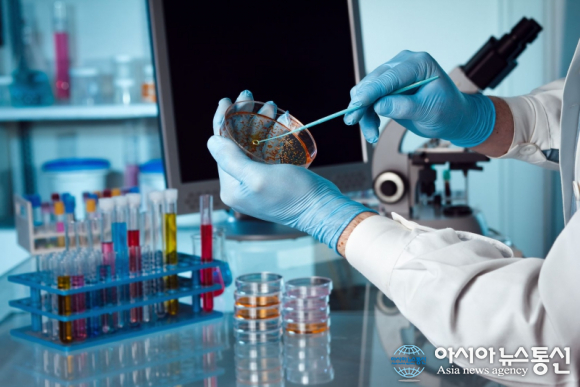 |
| Photo by angellodeco via 123RF |
A team of researchers at Duke University have turned bacteria into builders by programming these with a synthetic gene circuit. When the bacteria colony grew into the shape of a dome, the gene circuit triggered the production of a protein type distributed within the colony that recruited inorganic materials. Researchers supplied it with gold nanoparticles that formed a golden shell around the colony of bacteria which can be controlled by altering the growth environment. A device that can be used as a pressure sensor was the result and this proved that the process can create working devices.
Other known experiments used to successfully grow materials by tapping processes from bacteria relied on an external method of control where the bacteria grew and was limited to two dimensions, but Duke University researchers programmed the bacteria cells, controlled access nutrients, and left it to grow in three dimensions.
“This technology allows us to grow a functional device from a single cell. Fundamentally, it is no different from programming a cell to grow an entire tree,” said Lingchong You, the Paul Ruffin Scarborough associate professor of engineering at Duke University.
Using this synthetic system of harnessing the construction capabilities in bacteria allows tweaking of growth instructions to create different patterns and shapes. This is theoretically cheaper and faster than casting new dies or molds performed for traditional manufacturing, according to researchers.
“Nature is a master of fabricating structured materials consisting of living and non-living components. But it is extraordinarily difficult to program nature to create self-organized patterns. This work, however, is a proof-of-principle that it is not impossible,” said You.
Researchers used hybrid organic and inorganic structures as pressure sensors to demonstrate the possibility of applying the system to manufacture working devices. Identical domes were grown on two substrate surfaces and were sandwiched together so that each dome was positioned directly across its counterpart. Each dome was connected to an LED light bulb through copper wiring and when the pressure was applied to the sandwich, the domes pressed into one another, causing a deformation resulting in an increase in its conductivity.
“In this experiment, we’re primarily focused on the pressure sensors, but the number of directions this could be taken in is vast. We could use biologically responsive materials to create living circuits. Or if we could keep the bacteria alive, you could imagine making materials that could heal themselves and respond to environmental changes,” said Will Yangxiaolu Cao, first author of the study and a postdoctoral associate in You’s laboratory.














